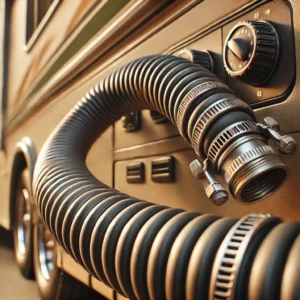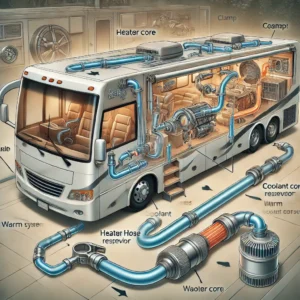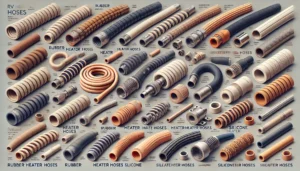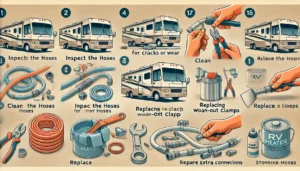Understanding RV Heater Hose: Types, Functions, and Upkeep
When it involves your mobile home (RV), maintaining the engine running efficiently and guaranteeing a comfortable cabin temperature are essential to a great trip experience. A vital element in keeping both of these facets is the RV heater hose. The heater hose is accountable for distributing coolant from the engine to the heater core, which eventually supplies warmth to the RV’s cabin throughout colder months. Comprehending the various sorts of RV heater hoses, their functions, and just how to effectively preserve them can help keep your RV’s heating unit in tip-top shape, guaranteeing you stay comfy when driving.
In this post, we’ll dive into the information of RV heater hoses, clarify their function, explore the types readily available, and offer necessary maintenance ideas.
What is RV Heater Hose?

An RV heater hose is an adaptable pipeline that links the engine to the heater core inside the RV. The heater core imitates a small radiator and transfers warmth from the engine’s coolant to the cabin air. The heater hose is accountable for lugging this coolant to and fro in between the engine and the heater core, permitting the furnace to operate correctly.
When the engine runs, coolant distributes with the system, absorbing warm. The heated coolant is after that routed via the heater hose to the heater core. The blower motor pushes air across the warmed heater core, warming the cabin. In chillier weather condition, this system makes certain that you don’t freeze while camping or driving in freezing temperatures.
Functions of an RV Heater Hose
R

The key feature of an RV heater hose is to enable the circulation of warm coolant from the engine to the heater core and back. This process is vital for two primary factors:
1. Heating the Cabin
The heater hose plays an important function in guaranteeing the cabin of the RV is warmed successfully. It distributes the coolant that has been actually heated up by the engine of a vehicle, enabling the heater core to heat the air inside the automobile or your vehicle.. This provides convenience during cold weather and makes certain that your travelers remain warm and cozy.
2. Preserving Engine Temperature
In addition to heating the cabin, the heater hose aids keep the engine’s optimal temperature. The coolant flowing with the heater hose not just supplies warmth yet also protects against the engine from overheating. Correct water or any other fluid circulation of coolant makes certain that the engine temperature level continues to be consistent and make the temperature low, which is very important for the long-lasting health of the engine to perform better than usual.
3. Avoiding Overheating and Coolant Loss
A well-maintained heater hose aids prevent problems like overheating and coolant loss. If the hose becomes broken or creates leaks, coolant can spill, bring about prospective engine issues. Without sufficient coolant blood circulation, the engine could get too hot, causing expensive damage.
Kinds Of RV Heater Hoses

There are a number of kinds of RV heater hoses available, each matched for various applications. Choosing the ideal sort of heater hose is crucial for optimum efficiency and durability. Right here are the most common kinds:
1. Rubber Heater Hose
Rubber heater hoses are just one of one of the most common types used in RV furnace. Made from sturdy rubber substances, these hoses are versatile, immune to heats, and cost effective. Rubber hoses are usually strengthened with fabric or braided products to boost their toughness and resilience, particularly in high-pressure applications to give a positive result for the user.
- C: Affordable, flexible, conveniently offered.
- Disadvantages: Over time, rubber hoses can degrade due to exposure to high warm, UV light, and chemicals. They may break or come to be breakable.
Rubber hoses are an excellent selection for common RV applications and those with moderate use.
2. Silicone Heater Hose
Silicone heater hoses are understood for their capability to withstand higher temperatures and severe problems. Made from high-performance silicone material, these hoses are usually more resilient and can deal with temperatures as much as 400 ° F( 204 ° C ). Silicone hoses are typically utilized in high-performance applications, including race cars and RVs with sturdy or high-temperature engines.
- Advantages: Extremely heat-resistant, durable, much longer lifespan.
- Disadvantages: More expensive than rubber hoses, can become less versatile in really cold weather.
Silicone hoses are optimal for RVs that run in warm environments or need an extra resilient, high-temperature option.
3. EPDM Heater Hose (Ethylene Propylene Diene Monomer).
EPDM hoses are made from synthetic rubber that is extremely resistant to heat, ozone, and weathering. These hoses are commonly made use of in automobile and RV cooling systems since they provide excellent warmth resistance and resilient sturdiness. EPDM hoses are created to withstand the harsh conditions of an engine bay while preserving versatility and toughness.
- Advantages: Excellent heat, ozone, and weather resistance. Long life expectancy.
- Disadvantages: May not be as versatile as silicone in specific applications.
EPDM heater hoses are a great selection for RV proprietors who want a reliable, durable hose that will stand the test of time, particularly in varying temperature levels.
4. Braided Stainless Steel Heater Hose.
Entwined stainless steel heater hoses are a reinforced version of the standard rubber hose. They consist of a rubber hose covered with a stainless steel pigtail for additional strength and protection. These hoses are usually utilized in high-performance or off-road RV applications, where they are exposed to harsh conditions that could or else cause deterioration.
- Advantages: Extremely sturdy, immune to abrasion, and pressure.
- Disadvantages: More costly, less flexible than rubber hoses.
Braided stainless steel hoses are excellent for off-road RVs or vehicles that encounter harsh surface and need extra longevity.
5. Versatile Heater Hose.
Versatile heater hoses are created for situations where the hose requires to bend or bend to fit tight areas or tough angles. These hoses are made from highly flexible products, such as rubber or silicone, and are simple to set up in areas with limited room.
- Advantages: Highly versatile, simple to mount in tight rooms.
- Disadvantages: Not as durable as stiff hoses in high-temperature applications.
Adaptable heater hoses are an excellent alternative when you require to work in limited engine areas or intricate RV heating systems.
Exactly how to Choose the Right RV Heater Hose.

Choosing the suitable RV heater hose entails taking into consideration several elements. Below are some crucial indicate remember when making your selection:.
1. Hose Size.
- The dimension of the heater hose should match the dimension of the connections in your RV’s furnace. Typical dimensions for RV heater hoses include 5/8 inch, 3/4 inch, and 1 inch. Make certain to check the size of the existing hose or refer to the owner’s guidebook to identify the right size for your RV.
2. Material and Durability.
- The product of the hose plays a considerable function in its performance. Take into consideration elements like the temperature level your engine performs at, the climate in which you will certainly be using your RV, and the kind of driving conditions you’ll encounter. For example, silicone hoses are suitable for high temperatures, while rubber hoses are best for moderate problems.
3. Temperature Resistance.
- If you are traveling in hot climates or using the RV for lengthy journey, you may require a hose that can endure high temperatures. Silicone hoses and EPDM hoses are excellent choices for such conditions, as they can take care of extreme heat without weakening.
4. Adaptability and Ease of Installation.
- Versatile hoses are perfect if you need to maneuver about tight rooms in your RV’s engine compartment. Consider just how easily the hose can be mounted or changed, especially if you intend on doing the job on your own.
5. Cost.
- Lastly, price is a crucial element to consider. While silicone and braided stainless steel hoses supply premium sturdiness and warm resistance, they come at a greater price. If you get on a spending plan, a common rubber hose may be sufficient for your demands, specifically if your RV is made use of in much less demanding problems.
Maintenance of Your RV Heater Hose.

Correct maintenance of your RV heater hose is important for guaranteeing its long life and the performance of your heater. Below are some tips to maintain your heater hose in good condition of RV Heater Hoses:.
1. Routine Inspections.
- Examine your RV heater hose occasionally for signs of wear, such as fractures, protrudes, or leaks. Check the clamps that hold the hose in place to guarantee they are limited and safe and secure. If you discover any kind of damages or coolant leakages, change the hose instantly.
2. Purging the Cooling System.
- Routinely flush your RV’s air conditioning system to get rid of any kind of debris, corrosion, or old coolant. This helps keep proper coolant circulation and avoids obstructing in the heater hose. Flushing the system additionally aids prolong the lifespan of your hoses.
3. Utilize the Right Coolant.
- Constantly use the manufacturer-recommended coolant for your RV. Utilizing the wrong coolant can trigger the hose product to break down faster and influence the total performance of the heating system.
4. Replace Worn or Damaged Hoses.
- RV Heater hoses are subjected to consistent heat and pressure, so it’s crucial to change them when they begin to reveal indications of wear. If you observe any type of cracks, leakages, or loss of flexibility, it’s time for a substitute.
5. Keep the Engine Cool.
- Stay clear of permitting the engine to overheat, as this can create the heater hose to break down faster. Guarantee that the radiator and cooling system are functioning effectively to avoid engine getting too hot, which can result in coolant leakages or hose damages.
Conclusion.
To wrap up, RV heater hoses are small yet vital components that ensure your comfort and your RV’s performance, especially during cold-weather travels. Understanding their types, functions, and proper upkeep is key to maintaining a reliable heating system and preventing costly repairs.
Whether you’re navigating snowy mountain passes or enjoying a winter getaway, a well-maintained RV heater hose keeps your cabin cozy and your engine running smoothly. By choosing the right hose for your needs and staying proactive with regular inspections and maintenance, you can confidently hit the road, knowing that your RV is prepared for any temperature challenge ahead.
Here’s to warm journeys and unforgettable adventures–stay safe and travel smart!
.